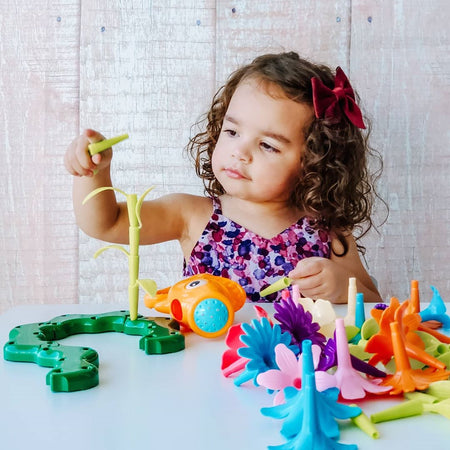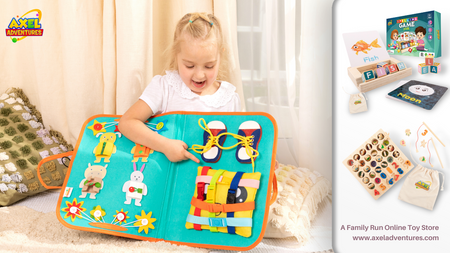Kimberly Voaden, an Occupational Therapist with over 10 years experience working with children of all ages strongly endorses beading as an excellent leisure activity, promoting childrens' development in the following areas.
Threading with beads is not only fabulous for developing essential fine-motor skills but can also be used as a way to introduce young children to a variety of mathematical concepts such as colours, patterns, shapes and counting.
Many people leave beading till their child is a bit older and has developed the fine motor skills needed to participate, but even toddlers can have a go with the right materials.
Fine Motor Skills:
Grasping: Various sizes of beads promote different grasps. Larger beads often promote the "3-jaw chuck" grasp, similar to holding a large pencil or marker. Smaller beads encourage children to use their pincer grasp, thus strengthening the small muscles of their hands.
In-hand manipulation skills: Many components of making a beaded craft increase strength and coordination in the small hand and finger muscles. For example, picking a bead up from the beading tray, and then manipulating it in one's hand until it is pinched between your thumb and finger, involves translation, shift and rotation movements of the bead within the hand.
Visual Perceptual Skills:
Visual Discrimination, Scanning, Visual Memory: The child must be able to remember the beading pattern to determine the bead they want to use. Once they know what bead they want, visual discrimination assists them in selecting the bead that fits their mental image of the desired bead. Finally, the child must scan across many different beads before finding the desired bead.
Visual Motor Skills:
Eye-Hand coordination: Threading beads onto a string involves bilateral coordination of the child's hands, and requires their eyes and hands to work together.
Cognitive Skills:
Planning: What style of necklace does the child want to make? What pattern will they choose? Where are all the materials needed to complete this beading activity? By answering these questions, the child develops his/her planning and problem-solving skills.
Math Skills: How long will my necklace, bracelet, or keychain need to be? How many beads do I need to complete this project? How can I create and maintain this beading pattern? Encouraging children to think through these functional math problems is a motivating way to improve academic skills in this area.
Social Skills:

Beading Parties promote sharing and cooperation, as children choose beads and complete their projects in a group setting.
Overall Developmental Benefits of Beading:
* Improved fine motor, visual perceptual, visual motor and cognitive skills
* Improved dressing skills (especially clothing fasteners, like buttons and zippers)
* Improved pencil grasp and pencil control during colouring and writing activities
* Improved visual perception and better planning often help a child to become more organized (e.g. Where is that sock? Where did I put my pencil case or favourite toy? Do I have everything I need to complete my homework?)
* And last but not least, Beading can provide a sense of accomplishment in completing a project that offers freedom of self-expression and camaraderie with other party-goers. This sense of "Occupational Fulfillment" can contribute to improved self-esteem.
**In other words, Beading is just plain FUN, and FUN is good for kids!!**
Credits: Kimberly Voaden, OT Reg. (Ont.)







